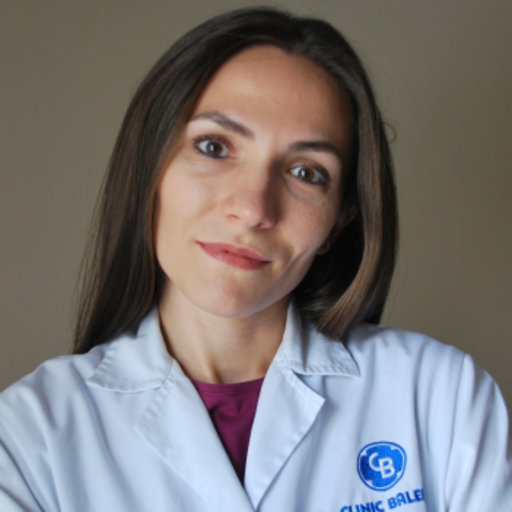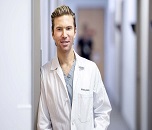Renowned Speakers

Maria-Magdalena Roth
University Medicine & Pharmacy Timisoara Spain

Reza F Ghohestani
Texas Institute of Dermatology USA

Hyoung Moon Kim
Maylin Clinic, South Korea

Anthony Rossi
Princeton Consumer Research USA

Nalini Kaul
Princeton Consumer Research, Canada

Dr. Annalisa Calisti
Rome University Italy

Mojgan Najafzadeh
University of Bradford UK

Eugenia Makrantonaki
Derma Center Wildeshausen Germany
Recommended Global Dermatology Webinars & Conferences
Europe & UK
Asia Pacific & Middle East
Canada
Global Dermatology-2024
About Us
We are delighted to announce the eagerly awaited The 23rd International Conference on Dermatology and Skin Care Sciences schedulded to take place on September 19-12, Paris, France. is a premier event dedicated to fostering advancements in dermatology and skin care research. Bringing together leading experts, researchers, and practitioners from around the globe, this conference serves as a platform for sharing knowledge, exchanging ideas, and discussing the latest developments in the field.Our mission is to promote excellence in dermatology and skin care by providing a collaborative and inclusive environment for learning and networking. Through engaging keynote presentations, interactive workshops, and insightful panel discussions, we aim to inspire innovation and drive progress in the field.
Join us for an enriching experience that promises to deepen your understanding of dermatology and skin care sciences, forge meaningful connections with peers, and contribute to the advancement of this vital field.A physician who specialized in this field is called a dermatologist. Dermatologists identify and remove skin cancers, cysts, and other skin growths. They also help treat other skin issues such as acne, skin allergies, rashes, and abnormalities of the skin such as psoriasis, eczema, dandruff, dermatitis, and more. Many dermatologists also do some aesthetic, elective procedures such as laser treatments, anti-aging, botox injections, and collagen injections. Types: Cosmetic dermatology, Dermatopathology, Immunodermatology, Mohs surgery, Pediatric dermatology, Teledermatology.
Sessions & Tracks
Track 1 : Advances in the Treatment of Psoriasis
Psoriasis is a chronic autoimmune skin condition characterized by red, scaly patches that can be itchy and painful. Over the years, significant progress has been made in understanding the underlying mechanisms of psoriasis, leading to the development of more effective and targeted treatments. This session will highlight some of the recent advances in the treatment of psoriasis, including novel therapeutic approaches and emerging treatment modalities.Biologic drugs have revolutionized the treatment of moderate to severe psoriasis. These drugs target specific components of the immune system involved in the development of psoriasis, leading to significant improvements in skin clearance and quality of life for patients. Phototherapy, or light therapy, has long been used to treat psoriasis. Recent advances in phototherapy include the use of targeted UVB light and excimer lasers, which can deliver light therapy more precisely and effectively, reducing the risk of side effects.Oral Therapies: In addition to biologics, several oral medications have been developed for the treatment of psoriasis.
Track 2 : Acne Vulgaris: New Insights and Therapeutic Approaches
Acne vulgaris is a common skin condition that affects millions of people worldwide, characterized by the formation of comedones, papules, pustules, nodules, and/or cysts. This session focuses on the latest insights into the pathogenesis of acne vulgaris and novel therapeutic approaches that are revolutionizing its management.Recent research has shed light on the complex pathogenesis of acne vulgaris, involving multiple factors such as sebum production, follicular hyperkeratinization, bacterial colonization (Propionibacterium acnes), and inflammation. Understanding these mechanisms is crucial for developing targeted therapies.Emerging Therapies several emerging therapies show promise in the treatment of acne vulgaris. These include novel topical agents, such as nitric oxide-releasing compounds and antimicrobial peptides, as well as systemic therapies targeting novel pathways involved in acne pathogenesis. ApproachesPersonalized medicine is an emerging approach in the management of acne vulgaris, where treatment plans are tailored to individual patients based on their unique characteristics and underlying pathophysiology. This approach aims to improve treatment outcomes and reduce the risk of side effects.
Track 3 : Melanoma: Current Trends in Diagnosis and Management
Melanoma: Current Trends in Diagnosis and Management" is a comprehensive session dedicated to the latest developments in the field of melanoma diagnosis and treatment. Leading experts will present on various topics, including advancements in early detection techniques such as dermoscopy and reflectance confocal microscopy. Additionally, the session will cover innovative diagnostic approaches like molecular profiling and liquid biopsy, offering insights into personalized treatment strategies.The management section will focus on the evolving landscape of melanoma therapy, including updates on immunotherapy, targeted therapy, and combination treatments. The session will also explore the role of adjuvant therapy in preventing disease recurrence and improving long-term outcomes. Attendees can expect to gain a deeper understanding of the current state of melanoma care and its future directions, with a focus on improving patient outcomes and quality of life.
Track 4 : Dermatologic Manifestations of Systemic Diseases
Dermatologic Manifestations of Systemic Diseases is a session dedicated to exploring the various ways in which systemic diseases can present with skin manifestations. Dermatologists and other healthcare professionals will discuss how conditions such as autoimmune diseases, metabolic disorders, infectious diseases, and malignancies can affect the skin.Through case presentations and discussions, attendees will learn how to recognize these dermatologic manifestations early, potentially aiding in the timely diagnosis and management of underlying systemic conditions. The session will also highlight the importance of a multidisciplinary approach in the care of patients with systemic diseases, emphasizing collaboration between dermatologists and other specialists.
Track 5 : Skin Cancer Prevention and Early Detection
Skin Cancer Prevention and Early Detection is a crucial session aimed at raising awareness about the importance of skin cancer prevention and early detection strategies. Latest evidence-based approaches for reducing the risk of skin cancer development, including sun protection measures, lifestyle modifications, and regular skin self-examinations.The session will feature expert presentations on the epidemiology of skin cancer, risk factors associated with its development, and the role of environmental factors such as UV radiation exposure. Moreove will learn about the ABCDEs of melanoma detection and other key indicators for identifying suspicious lesions during clinical examinationsThrough interactive discussions and practical demonstrations, participants will leave equipped with the knowledge and tools necessary to promote skin cancer awareness in their communities and implement effective prevention and early detection strategies in clinical practice. Ultimately, the goal of this session is to empower healthcare professionals and the public alike to take proactive steps towards reducing the burden of skin cancer worldwide
Track 6 : Innovations in Cosmetic Dermatology
Exosomes, tiny extracellular vesicles released from stem cells, have emerged as powerful agents in dermatological treatments. Their application extends to skin rejuvenation and the management of conditions such as psoriasis, atopic dermatitis, systemic sclerosis, pigment regulation, vitiligo, and hair growth. Extracted from human mesenchymal stem cells, exosomes deliver essential lipids, messenger RNA, cytokines, and proteins to rejuvenate the skin and enhance overall cell health. In the realm of advanced cosmetic dermatology, nano and micro fat transfer plays a pivotal role in rejuvenating the face and hands. This technique involves extracting a small amount of fat from donor areas and injecting it into targeted regions, followed by purification to extract stem cells rich in Stromal Vascular Fraction (SVF). Nano fat improves skin tone and texture, while micro fat adds volume to sunken cheeks. Employing a blend of radiofrequency energy and micro-needling techniques, Morpheus8/ InMode tightens and contours the skin, addressing concerns such as sagging and unwanted fat. With recommended treatment sessions spaced at intervals of one to two weeks, this method promises remarkable results in skin tightening and remodeling
Track 7 : Advances in Dermatopathology and Molecular Diagnostics
Dermatopathology is a specialized field that combines dermatology and pathology to diagnose and study skin diseases at a microscopic level. Recent advancements in dermatopathology and molecular diagnostics have revolutionized the way skin diseases are diagnosed and managed. This session will explore the latest developments in these areas, highlighting the impact they have had on patient care and treatment outcomes.Molecular diagnostic techniques have significantly improved the accuracy and precision of diagnosing skin diseases. By analyzing the genetic and molecular changes in skin cells, dermatopathologists can identify specific markers associated with various skin conditions, leading to more targeted and effective treatments.Digital pathology has transformed the way dermatopathologists analyze skin samples. By digitizing slides and using advanced imaging technologies, pathologists can collaborate more effectively, share cases for consultation, and perform detailed analysis that was not possible with traditional microscopy.
Track 8 : Hair Disorders: Diagnosis and Treatment Options
Effective treatments for some types of hair loss are available. You might be able to reverse hair loss, or at least slow it. With some conditions, such as patchy hair loss (alopecia areata), hair may regrow without treatment within a year. Treatments for hair loss include medications and surgery. If your hair loss is caused by an underlying disease, treatment for that disease will be necessary. If a certain medication is causing the hair loss, your doctor may advise you to stop using it for a few months.Medications are available to treat pattern (hereditary) baldness. The most common options include Minoxidil (Rogaine). Over-the-counter (nonprescription) minoxidil comes in liquid, foam and shampoo forms. To be most effective, apply the product to the scalp skin once daily for women and twice daily for men. Many people prefer the foam applied when the hair is wet. Products with minoxidil help many people regrow their hair or slow the rate of hair loss or both. It'll take at least six months of treatment to prevent further hair loss and to start hair regrowth. It may take a few more months to tell whether the treatment is working for you. If it is helping, you'll need to continue using the medicine indefinitely to retain the benefits.
Track 9 : Atopic Dermatitis: Updates on Pathophysiology and Management
Atopic dermatitis (atopic eczema) is a chronic relapsing and remitting inflammatory skin disease affecting one in 10 people in their lifetime. Atopic dermatitis is caused by a complex interaction of immune dysregulation, epidermal gene mutations, and environmental factors that disrupts the epidermis causing intensely pruritic skin lesions. Repeated scratching triggers a self-perpetuating itch-scratch cycle, which can have a significant impact on the patient's quality of life. The American Academy of Dermatology has created simple diagnostic criteria based on symptoms and physical examination findings. Maintenance therapy consists of liberal use of emollients and daily bathing with soap-free cleansers. Use of topical corticosteroids is the first-line treatment for atopic dermatitis flare-ups. Pimecrolimus and tacrolimus are topical calcineurin inhibitors that can be used in conjunction with topical corticosteroids as first-line treatment.
Track 10 : Dermatologic Surgery: Techniques and Complication Management
Dermatologic surgical procedures in the lower extremity may lead to complications for podiatric patients. Sharing insights from their experience and the literature, these authors discuss how to prevent complications including infection, coagulation issues, wound dehiscence, scarring and pain.Complications during dermatologic surgery are not uncommon events and taking the correct steps early in management can prevent significant morbidity for the patient. Although there are stringent postoperative protocols to combat improper wound healing, it is important to be aware of the potential surgical complications that may arise with patients.Surgical complications may range from life-threatening to acute with potential complications including cardiorespiratory arrest, anaphylaxis and cardiac arrhythmias. Complications also may be limited to improper wound healing due to superinfection, wound dehiscence and necrosis, or an undesirable aesthetic outcome of a scar. Proper patient history gathering prior to any surgical procedure is fundamental to minimizing serious complications. Adhering to proper sterile technique during surgical procedures in combination with thorough postoperative instructions is key to preventing complications from dermatologic surgeries.1 Conducting dermatologic surgeries with careful consideration of the potential complications that may arise is an effective prevention measure.
Track 11 : Cutaneous Drug Reactions: Identification and Management Strategies
Cutaneous adverse drug reactions (CADR), also known as toxidermia, are skin manifestations resulting from systemic drug administration. These reactions range from mild erythematous skin lesions to much more severe reactions such as Lyell's syndrome. They represent a heterogeneous field, including various clinical patterns without specific features suggesting drug causality. This activity describes the evaluation and management of cutaneous adverse drug reactions and explains the role of the interprofessional team in managing patients with this condition. Most systemic drugs are potential causes of cutaneous adverse reactions. Contrast media and certain drug classes are known to be common offenders, such as antibiotics, anticonvulsants, antineoplastic drugs, nonsteroidal anti-inflammatory drugs, and allopurinol. Antibiotics and anti-epileptics develop toxidermia complications in 1% to 5% of treatments. There are multiple mechanisms that account for the variability in drug reactions. They can be classified into two general categories: immunologic and nonimmunologic. It is often necessary to test for potential allergens to further classify drug reaction etiology. The most common testing methods include epicutaneous patch testing, prick testing, and intradermal testing. In vivo or in vitro tests are unable to confirm the drug causality.
Track 12 : Dermatologic Emergencies: Recognition and Immediate Management
Dermatologic emergencies encompass a range of conditions that require prompt recognition and management to prevent serious complications. These emergencies can include severe allergic reactions, such as anaphylaxis, as well as life-threatening skin conditions like Stevens-Johnson syndrome and toxic epidermal necrolysis.Recognition of dermatologic emergencies involves identifying key symptoms and signs, such as widespread skin blistering, extensive rash, or rapidly progressing skin changes. Immediate management may include discontinuation of suspected medications, administration of intravenous fluids and medications (such as corticosteroids or antihistamines), and referral to a dermatologist or emergency department for further evaluation and care.It's crucial for healthcare providers to be familiar with the recognition and management of dermatologic emergencies, as early intervention can significantly improve outcomes and prevent serious complications.
Track 13 : Ethnic Skin: Unique Considerations in Diagnosis and Treatment
Ethnic skin refers to the unique characteristics and considerations related to skin health and treatment in individuals with non-Caucasian ancestry. People of different ethnicities can have varying skin types, colors, and responses to treatments, making it essential for dermatologists to understand these differences when diagnosing and treating skin conditions.Melasma is a form of hyperpigmentation that appears on the face, generally the cheeks, bridge of the nose, forehead and upper lip and sometimes on other sun-exposed parts of the body, such as the forearms. It is similar in appearance to age spots but the darker affected areas are larger. It is most common amongst dark skinned, Hispanic and Asian individuals: the incidence of Melasma in pregnant Mexican women has been reported to be as high as 80%. Read more about causes and treatment in Melasma.What differs between ethnicities is the level of melanocyte activity, combined with how the cells are made up and grouped together. It is these differences that result in different shades of skin. While skin of all colours can suffer from pigment disorders, they are most common, more noticeable and more of a concern for individuals of Asian, Hispanic or African origin.
Track 14 : Autoimmune Skin Diseases: Current Concepts and Future Directions
Autoimmune diseases of the skin occur when the immune system attacks normal skin. The immune system can be broadly divided into an effector arm responsible for fighting infections and cancer and a regulatory arm that reduces autoreactivity and maintains immune homeostasis. Cutaneous autoimmunity develops when the equilibrium between the effector arm and regulatory arm of the immune system is disrupted. Recent insights into the inflammatory pathways that are overactive in some cutaneous autoimmune diseases have led to therapies targeting the effector arm of the immune system with greater treatment efficacy than previously used broad immunosuppressants. The current paradigm of inhibiting excessive immune activation for treating cutaneous autoimmunity will be discussed including cytokine blockade, cellular depletion, intracellular signaling blockade and costimulatory blockade. Despite the success of this approach many cutaneous autoimmune diseases lack a clearly delineated pathway to target and therefore new strategies are needed. An emerging therapeutic strategy targeting the regulatory arm of the immune system to induce tolerance and disease remission provides new hope for treating cutaneous autoimmunity.
Track 15 : Dermatologic Care for the Aging Population
Dermatologic care for the aging population is a crucial aspect of healthcare, as the skin undergoes significant changes with age. Understanding these changes and implementing appropriate care strategies are essential for maintaining skin health and overall well-being in older adults.As people age, the skin becomes thinner, loses elasticity, and becomes more prone to dryness and wrinkling. Additionally, the skin's ability to repair itself diminishes, making it more susceptible to injury and infection. These changes can lead to an increased risk of skin conditions such as skin cancer, dermatitis, and pressure ulcers. Wound Care is Proper wound care is essential for preventing and treating pressure ulcers and other skin injuries common in older adults. Routine skin examinations by a dermatologist can help detect early signs of skin cancer and other skin conditions, allowing for timely intervention and treatment. Encouraging healthy lifestyle habits, such as regular sunscreen use, a balanced diet, and smoking cessation, can help prevent skin damage and reduce the risk of skin cancer and other skin conditions.
Track 16 : Teledermatology: Enhancing Access to Dermatologic Care
Teledermatology increases access to dermatologic care, due to its cost- and time-effectiveness that benefits both providers and patients. Thus, it may prove essential for providing expanded access to many different underserved and marginalized populations in the USA and globally. Given the nation’s undersupply of dermatologists, teledermatology can potentially serve as a way for dermatologists to see more patients efficiently and increase opportunities for patients to seek high-quality dermatology care. Teledermatology has not only enhanced patient compliance and improved individualized care but has also increased access to care among rural and urban communities both domestically and internationally. Medicaid populations in particular have benefited, but other underserved communities that stand to benefit come from rural and urban communities, and elderly populations. The implementation of teledermatology has shortened appointment wait times, increased follow-up care and treatment compliance, minimized the distance needed to be travelled for care, reduced personal and health care systemic costs, and increased dermatologic knowledge among dermatology personnel. However, teledermatology’s reliance on reliable internet connections and devices could potentially worsen disparities if access to these new avenues of care is unequal.
Track 17 : Environmental Dermatology: Understanding and Mitigating Skin Damage
Environmental degradation both urban and rural expansion modify natural landscapes, restrict native vegetation coverage, modify the geography, water and waste flow, with a direct impact on biodiversityDeforestation, pasture development, crops and underground resources exploration have been historically associated with the emergence of arboviruses, zoonoses and other infectious diseases that arise in outbreaks or endemically, depending on how the deforestation is carried out. As forests are reduced (or become unbalanced) and the reservoirs of certain diseases are extinct, humans become involved in their natural cycle. Examples that emerged from this imbalance: malaria epidemics after the construction of the Panama Canal, mining and the construction of railroads in the northern region of Brazil; the yellow fever epidemic on the coast of northeastern Brazil during the 17th century sugarcane expansion and the rabies outbreak on the island of Marajó (2018), Brazil, after agricultural expansion. In Dermatology, American tegumentary leishmaniasis (ATL) is caused by protozoa of the genus Leishmania, which causes skin ulcers.
Track 18 : Skin Health and Lifestyle: Nutrition and Wellness
Skin Health is intricately linked to one's lifestyle, including nutrition and overall wellness. What we eat and how we care for our bodies play a pivotal role in the appearance and health of our skin. A balanced diet rich in vitamins, minerals, antioxidants, and omega-3 fatty acids is essential for skin health. These nutrients support collagen production, skin hydration, and protection against oxidative stress. Incorporating fruits, vegetables, nuts, and fatty fish can promote a radiant complexion. Hydration is equally crucial. Drinking an adequate amount of water helps maintain skin elasticity and moisture levels. Limiting alcohol and caffeine intake, which can dehydrate the skin, is advisable. Physical activity improves blood circulation, which nourishes the skin with essential nutrients and flushes out toxins. Exercise also reduces stress, a significant contributor to skin issues like acne and eczema. Adequate sleep is vital for skin repair and rejuvenation. During deep sleep, the body releases growth hormones that aid in cell turnover and collagen synthesis. Stress management techniques, such as meditation and yoga, can mitigate the impact of stress-related skin conditions. A skincare routine tailored to one's skin type is essential.
Track 19 : Skin Aging: Scientific Insights and Anti-Aging Strategies
Skin aging is a natural and inevitable process, but scientific insights and innovative anti-aging strategies have revolutionized our understanding of this complex phenomenon. The skin, our body's largest organ, undergoes structural and functional changes over time, leading to visible signs of aging such as wrinkles, fine lines, and loss of elasticity. Scientific research has unveiled key mechanisms driving skin aging, including collagen degradation, oxidative stress, and genetic factors. Armed with this knowledge, dermatologists and skincare experts have developed a wide range of evidence-based anti-aging strategies to combat these processes effectively. These strategies encompass advanced skincare formulations containing ingredients like retinoids, antioxidants, and peptides, which stimulate collagen production and protect against free radical damage. Non-invasive treatments such as chemical peels, microdermabrasion, and laser therapy can rejuvenate the skin's appearance by promoting cellular turnover and collagen remodeling.
Market Analysis
The Dermatology and skin care sciences industry is experiencing significant growth and transformation, driven by various factors such as the rising awareness of skin health, advancements in technology, and shifting consumer preferences. This report provides an in-depth analysis of the current state of the market, key trends, major players, and future projections for the year 2024.
Market Overview
The dermatology and skin care sciences market encompasses a wide range of products and services aimed at addressing skin health, beauty, and well-being. This industry has seen sustained growth over the past few years, and it is expected to continue its expansion into 2024. Skin care products, dermatological drugs, cosmetic treatments, and medical devices are integral components of this market.
Market Size and Growth
As of 2023, the Global Germatology and skin care sciences market was valued at approximately $XX billion. It is anticipated that the market will experience a compound annual growth rate (CAGR) of XX% from 2023 to 2024, reaching an estimated value of $XX billion by the end of 2024. This projected growth is attributed to several key drivers.
Factors Driving Market Growth
Increasing Skin Health Awareness: There has been a notable rise in awareness regarding the importance of skin health and the prevention of skin disorders. This has led to heightened demand for skin care products and services among consumers of all age groups. Aging Population: The global demographic shift towards an aging population has resulted in a higher prevalence of various skin conditions and age-related concerns. Consequently, there is an increased demand for dermatological treatments and anti-aging products. Technological Advancements: The dermatology field has witnessed significant technological advancements. Innovations in laser therapy, non-invasive procedures, and diagnostic tools have expanded the range of available treatments and attracted more patients. Cosmetic Procedures: Cosmetic dermatology procedures, including Botox, dermal fillers, chemical peels, and microdermabrasion, have gained widespread acceptance. Consumers are increasingly seeking these treatments for aesthetic enhancements.
Market Segmentation: The dermatology and skin care sciences market can be categorized into the following segments:
Product Type:
- Skincare Products
- Dermatological Drugs
- Medical Devices
- Cosmetic Treatments
End-users:
- Hospitals and Clinics
- Dermatology Centers
- Homecare
Geography:
- North America
- Europe
- Asia-Pacific
- Latin America
- Middle East and Africa
Key Trends and Upcoming Developments
Personalized Skincare: Advances in genetics and skin analysis technology are enabling the development of personalized skincare regimens tailored to individual needs and genetic profiles. This trend is expected to gain momentum in 2024. Telemedicine in Dermatology: Telemedicine is poised to play a significant role in dermatology, improving access to care, particularly in underserved areas. Virtual consultations and follow-ups are expected to become more common. Sustainable and Clean Beauty: Sustainability and clean beauty are becoming paramount in the industry. Consumers are increasingly seeking eco-friendly skincare products, which will drive innovation in packaging and ingredients. AI in Dermatology: Artificial intelligence is being integrated into dermatological practices to enhance the accuracy and efficiency of skin disease diagnosis and treatment recommendations. Machine learning algorithms can analyze large datasets and assist dermatologists in making more informed decisions. Non-Invasive Treatments: Non-surgical and minimally invasive cosmetic treatments are gaining popularity due to their effectiveness and shorter recovery times. Advancements in technologies such as radiofrequency and ultrasound are driving this trend. Combination Therapies: Combining skincare products with dermatological treatments is expected to become more common as patients seek holistic approaches to address their skin concerns. Dermatologists may recommend specific product regimens in conjunction with in-office treatments. Regulatory Changes: Evolving regulations and stricter safety standards may impact the development and marketing of dermatological drugs and cosmetic procedures. Companies will need to stay informed and adapt to these changes.
Conclusion
The dermatology and skin care sciences market is on a growth trajectory for 2024, driven by factors such as increased awareness of skin health, technological advancements, and the aging population. Personalized skincare, telemedicine, sustainability, AI integration, non-invasive treatments, combination therapies, and regulatory changes will shape the industry's future. Companies that embrace these trends and maintain a commitment to innovation will be well-positioned for success in this dynamic and evolving market.
Past Conference Report
globaldermatology-2023
Conference Series LLC Ltd welcomes all the speakers and delegates from around the world to join "Global Dermatology-2023” during July 17-18, 2023 at Zurich, Swtizerland. Global Dermatology-2023 is an exceptional occasion intended for experts to encourage the use of dermatological methods in studying large disease burden and highlighting existing opportunities in the field of Dermatology. This international and interdisciplinary conference will act as center for dermatologists,clinicians,business professionals,foundation leaders, researchers,academicians and others to discuss and exchange on recent dermatological concepts and brings together professionals from every generation who share a commitment to reduce the global burden regarding Dermatology.
About Organization
Conference Series LLC Ltd is the world's leading specialist in organizing academic, scientific and business conferences, meetings, symposia and exhibitions in different vertical and horizontal sectors such as medicine, pharmacy, engineering, science, technology and business to promote scientific research. Each year, we organize over 3,000 global events, including more than 1,000 conferences, more than 1,000 symposia, more than 1,000 workshops in the United States, Europe, the Middle East and Asia, with the generous support and cooperation of our 30,000 editorial board members and over 1,000 scientific societies. All conference proceedings are published in special issues of our 700+ international open access journals with the DOI provided by CROSSREF.
Benefits of Attending
With individuals from around the globe concentrated on finding out about Dermatology this is your single best chance to achieve the biggest gathering of members. Exchange ideas and network with leading dermatology professionals, dermatologists, cosmetologists, clinicians, business analysts and researchers from more than 40 countries. Lead presentations, communicate data, meet current and potential customers, sprinkle another product offering, and earn name recognition on this two-day opportunity.
Target Audience
- Dermatologists
- Cosmetologists
- Trichologists
- Doctors
- Professors
- Associate professors
- Business Analysts
- Foundation Leaders
- Researchers
- Students
Past Reports Gallery
To Collaborate Scientific Professionals around the World
Conference Date September 19-20, 2024
For Sponsors & Exhibitors
Speaker Opportunity
Useful Links
Past Conference Report
Supported By
All accepted abstracts will be published in respective Conference Series International Journals.
Abstracts will be provided with Digital Object Identifier by



